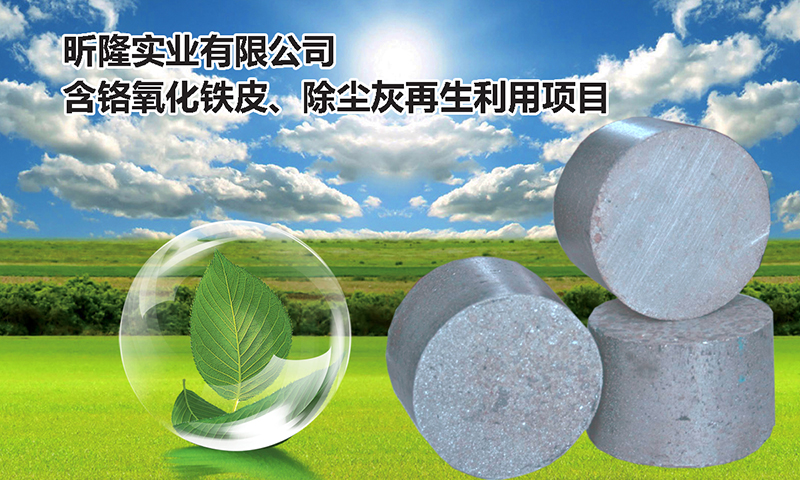Heyuan Xinlong Industrial Group Co., Ltd. Chromium-containing Iron Oxide Scale and Dust Ash Recycling Project
In 2008, Xinlong Group responded to the national macro-control industrial policy by investing 60 million yuan to transform and upgrade, becoming a project that produces chromium-nickel iron materials encouraged by the state. This project was completed and put into production in 2010, with an annual production capacity of 100,000 tons of stainless steel reducing materials and an annual treatment capacity of approximately 140,000 tons of stainless steel oxide scale, which can basically digest all the oxide scale produced by stainless steel production and processing in Guangdong Province. This contributes significantly to the country's recycling of resources and environmental protection efforts.
Nickel-Chromium Alloy
Xinlong Group has launched regenerated nickel-chromium iron alloy for stainless steel smelting enterprises. The company uses oxide scale and coke generated during the production process of stainless steel enterprises as raw materials. Through proprietary reduction technology, the oxide scale is reduced and smelted to produce regenerated nickel-chromium iron alloy products. The advantages of these products lie in maintaining high-value chromium, nickel, copper, and manganese components while having low phosphorus and sulfur content. Meanwhile, the company provides these products to stainless steel enterprises at reasonable prices as high cost-performance raw materials in their smelting processes. Currently, it has become an important raw material for some stainless steel enterprises, helping them save on raw material costs. Additionally, the company's products can also serve as a service form: the company recycles oxide scale from stainless steel enterprises and provides regenerated nickel-chromium iron alloy, charging only a reasonable reduction fee, which helps stainless steel enterprises lower costs while achieving solid waste recycling, allowing them to meet national environmental protection requirements.
Nickel-Chromium Iron Alloy Composition Table

Direct Reduced Iron (DRI)
In recent years, as market competition has intensified, companies have sought to improve energy efficiency and reduce costs through technological reforms by using high-quality raw materials to enhance economic benefits. In the steelmaking industry, various methods have been employed to meet the quality requirements of scrap steel and recover valuable metal elements. Coupled with the continuous improvement of non-coking DRI production processes, many enterprises are actively developing the production of direct reduced iron. Meanwhile, there have been significant achievements in the practical application and economic benefits of the DRI process. It has successfully replaced a portion of scrap steel, improved the quality of molten steel, reduced the number of charge cycles, and shortened the steelmaking time.
Our company utilizes advanced and mature coal-based tunnel kiln production technology in China, exclusively sourcing ordinary construction steel and oxide scale from steel production and processing enterprises in Guangdong, including stainless steel. Based on different product sources, we produce two main categories of direct reduced iron (DRI)—carbon steel and stainless steel—through reasonable formulations. The supplied DRI has been confirmed to deliver excellent performance under specific smelting conditions. DRI serves as a partial substitute for scrap steel in the steelmaking industry, improves charging conditions, and saves energy, making it a mature production process. Additionally, stainless steel DRI can be used as an alloying agent in smelting, replacing scrap steel while also recovering metals such as Ni, Cr, Mn, and Cu, thereby reducing production costs.



